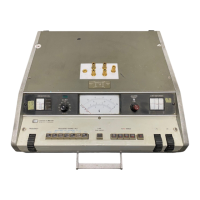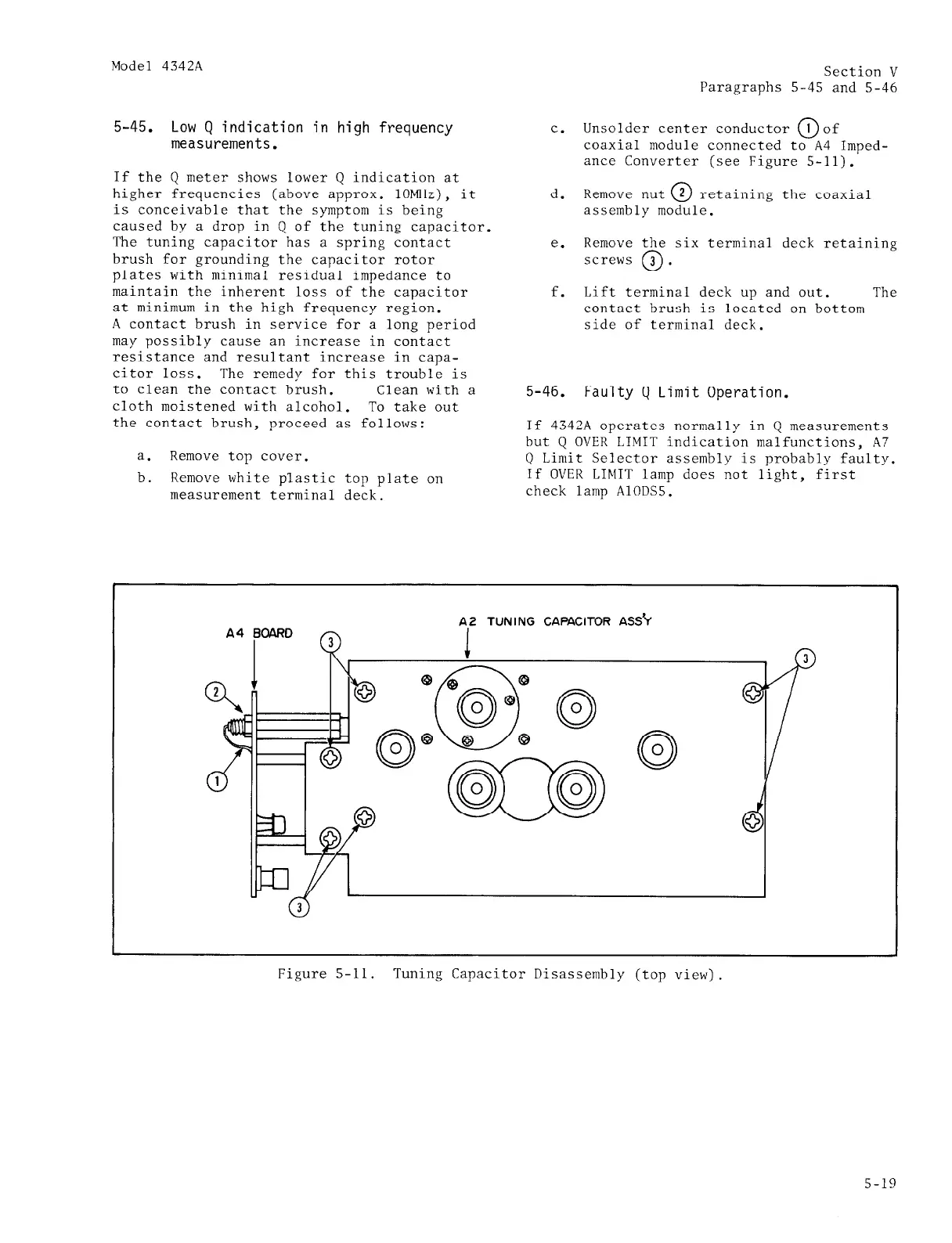Model 4342A
Section V
Paragraphs 5-45 and 5-46
5-45. Low Q indication in high frequency
measurements.
If the Q meter shows lower Q indication at
higher frequencies (above approx. lOMltz), it
is conceivable that the symptom is being
caused by a drop in Q of the tuning capacitor.
The tuning capacitor has a spring contact
brush for grounding the capacitor rotor
plates with minimal residual impedance to
maintain the inherent loss of the capacitor
at minimum in the high frequency region.
A
contact brush in service for a long period
may possibly cause an increase in contact
resistance and resultant increase in capa-
citor loss. The remedy for this trouble is
to clean the contact brush. Clean with a
cloth moistened with alcohol. To take out
the contact brush, proceed as follows:
a.
Remove top cover.
b.
Remove
white plastic top plate
on
measurement terminal deck.
c. Unsolder center conductor 1 of
0
coaxial module connected to A4 Imped-
ance Converter (see Figure S-11).
d.
Remove nut
0
retaining the coaxial
assembly module.
e.
Remove the six terminal deck retaining
screws
0.
f.
Lift terminal deck up and out. The
contact brush is located on bottom
side of terminal deck.
5-46. Faulty Q Limit Operation.
If 4342A operates normally in Q measurements
but Q OVER LIMIT indication malfunctions, A7
Q Limit Selector assembly is probably faulty.
If OVER LIMIT lamp does not light, first
check lamp AlODSS.
A2 TUNING CAPACITOR ASS?
Figure S-11. Tuning Capacitor Disassembly (top view).
5-19

